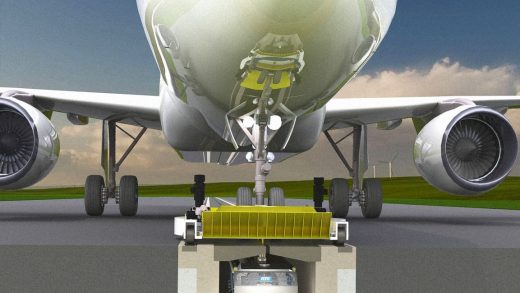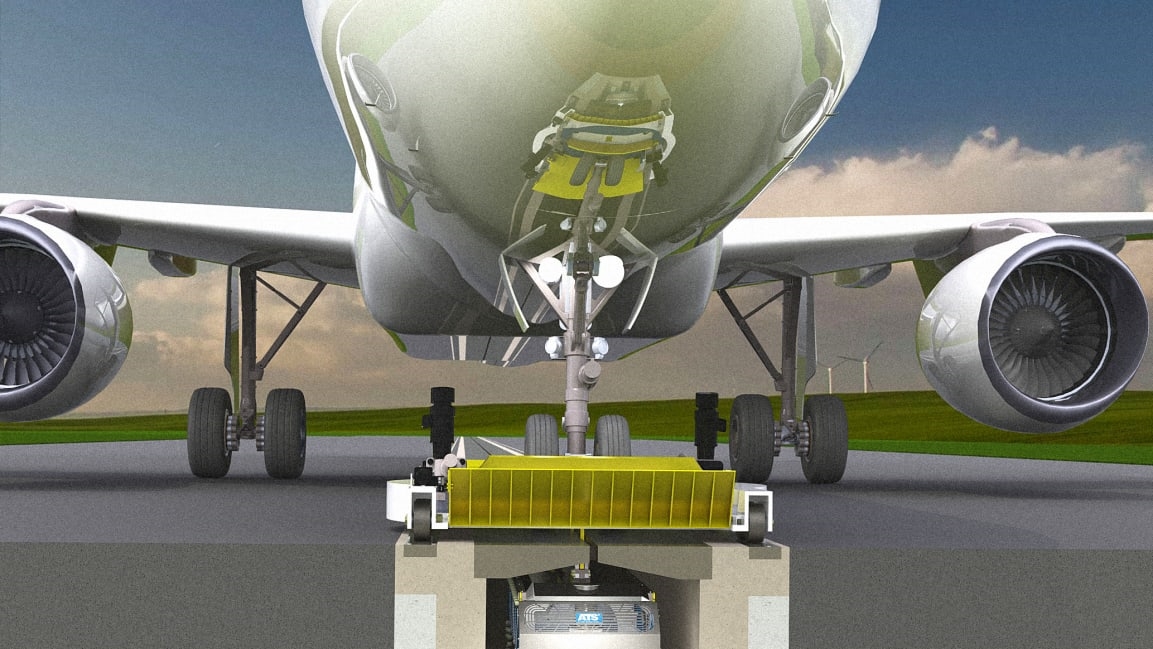A Boeing 747 burns one ton of fuel while taxiing. This electric towing system could help
One of the most tedious parts of flying is waiting as the plane taxis before takeoff or after landing. But it’s much more than a time waste. It’s also a big source of carbon emissions.
The average taxi time in the U.S. is between 16 and 27 minutes, which accounts for about 5% of a flight’s fuel consumption. A Boeing 747, for example, uses 1 ton of fuel during a 15-minute taxi. But a new towing system could bring that number closer to zero.
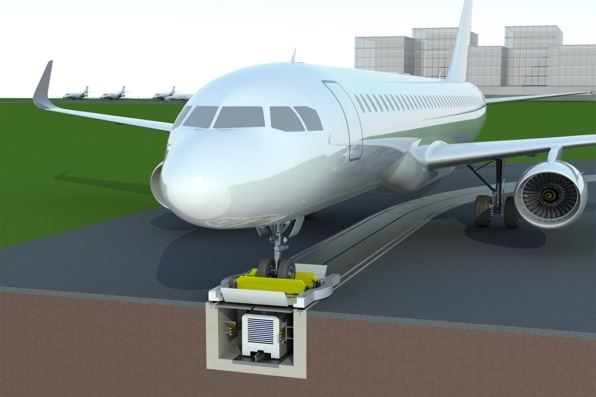
Known as the Aircraft Towing System (ATS), the concept promises fuel savings and fewer carbon emissions while planes are on the ground. It works something like this: After the plane lands, the pilot drives the aircraft’s nosewheel (the landing wheel at the front of the plane) onto a tow dolly, where it’s secured in place. At this point, the engines can be turned off and the plane is “pulled” along an underground rail system that’s set in 4-foot-deep channels. Think of it as a two-part system: Aboveground, the tow dolly connects to the nosewheel; belowground, it connects to an electric-powered pull car that travels along track channels, pulling the plane from the runway to the gate (or vice versa). It’s a big undertaking, but according to a 2019 report almost 10% of airplane emissions could be reduced by simply fixing taxiing inefficiencies.
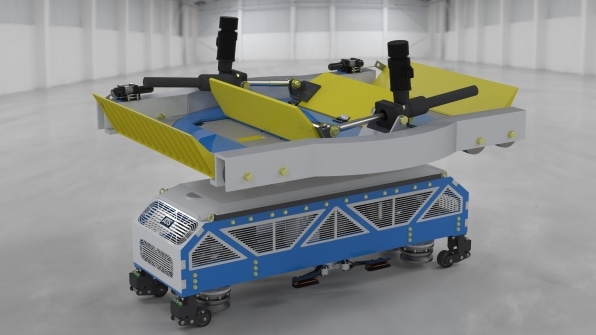
ATS is the brainchild of Polish businessman Stan Malicki, who, in 2015, partnered with Vince Howie, then-director of aerospace and defense with the Oklahoma Department of Commerce. The company is now based in Oklahoma, where Tinker Air Force Base and American Airlines’s maintenance stations are located.
If an airport installed the complete system, which would take the planes from the gates all the way to the runways, ATS would dig a network of trench-like channels, about 4 feet wide, down the middle of taxiways and branching off toward each gate. Inside the channels, an electric-powered pull car would run along a monorail, pulling the aboveground dolly—and the plane—along with it. The channels would be covered with two steel plates separated by a 1.5-inch slit where the pull car and the tow dolly connect.
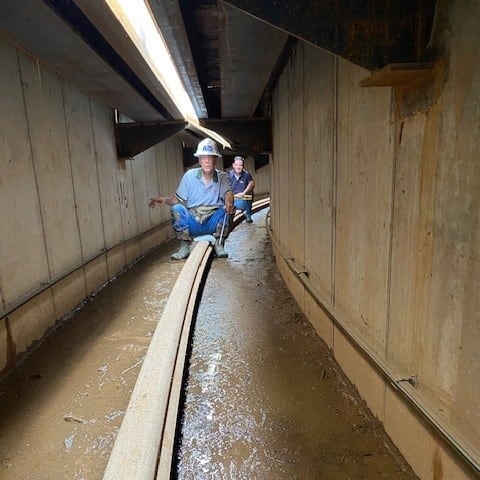
A prototype of the technology is currently being installed at Ardmore Industrial Airpark, halfway between Dallas and Oklahoma City, and will be completed in late April. The prototype focuses on a small part of the system called a pushback (a procedure that just pushes the plane away from the gate). It consists of a 360-foot-long channel with two straight sections and a large 90-degree curve at the gate. The prototype system will cost approximately $1 million, but Howie notes these are onetime costs that don’t reflect the real price, which he estimates to be about $650,000 per gate, including one tow dolly and one pull car.
For an airport the size of Chicago O’Hare or Dallas/Fort Worth, a complete ATS setup would cost about $150 million, but Howie says it could save airlines $491 million in fuel consumption over the course of one year. He estimates it would take about that long to fully overhaul a large airport, or about 90 days to retrofit a few gates and install the pushback system only. (The company is working toward making the system eligible for the Airport Improvement Program, which is pumping $3.2 billion into modernizing airport facilities nationwide.)
In the meantime, ATS has two main competitors. TaxiBot—a human-operated vehicle that can tow a plane from the gate to the runway while its engines are idle—is currently used at Amsterdam’s Schiphol Airport and at India’s Delhi International Airport. But Howie says once the vehicle has towed the plane to the runway, it has to return to the gate, potentially causing traffic on taxiways. Meanwhile, WheelTug requires an altogether new nosewheel, which would necessitate modifications on planes that would make them heavier and less fuel-efficient in the air.
By comparison, ATS was designed to fit all kinds of planes, from commercial to military, and bring in considerable fuel savings, particularly for the Boeing 737 and Airbus 320, which make up 80% of commercial fleets. Most savings, however, would go to the airlines, so convincing both parties could prove tricky: The system benefits airlines more directly than airports, but airlines can’t use it without airports investing in the infrastructure.
Howie says the company is in talks with airports from California to Colorado, including with state officials where an airport is located inside a national park. (He wouldn’t disclose specifics, but the only such commercial airport in the country is Jackson Hole, located in Grand Teton National Park). “There are small airports that want to lead the U.S. in environmental,” Howie says. “The environmental pressure of that particular airport is tremendous because it’s inside a national park.”
Fast Company , Read Full Story
(25)

